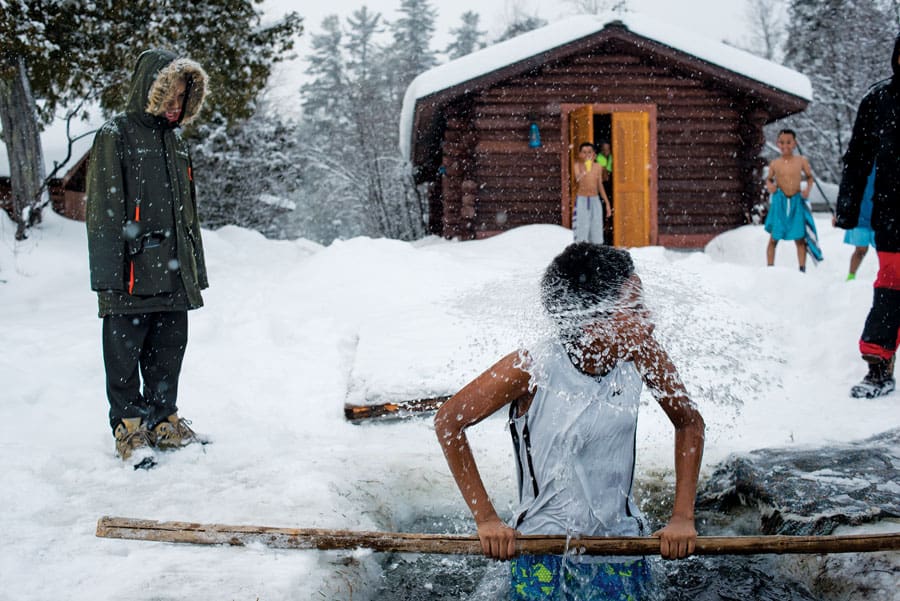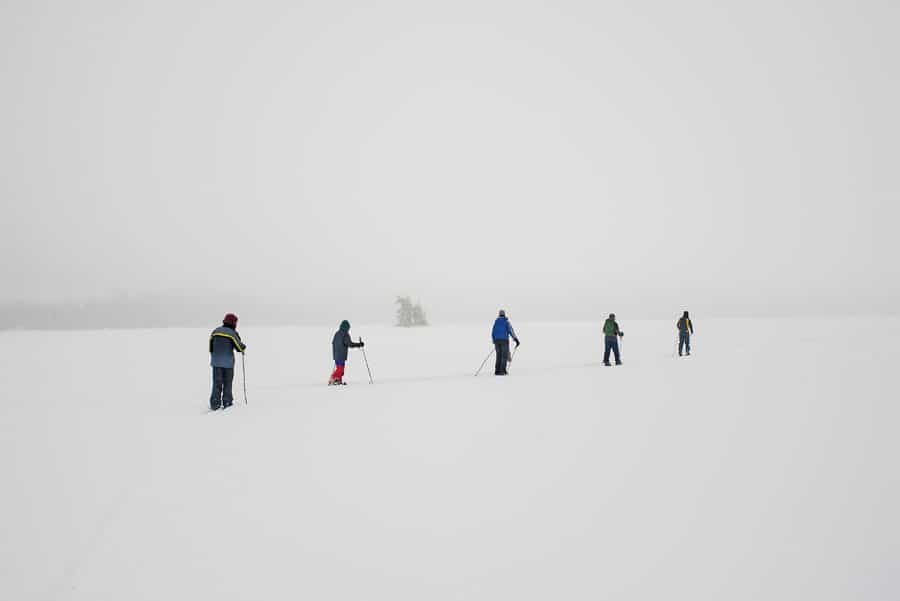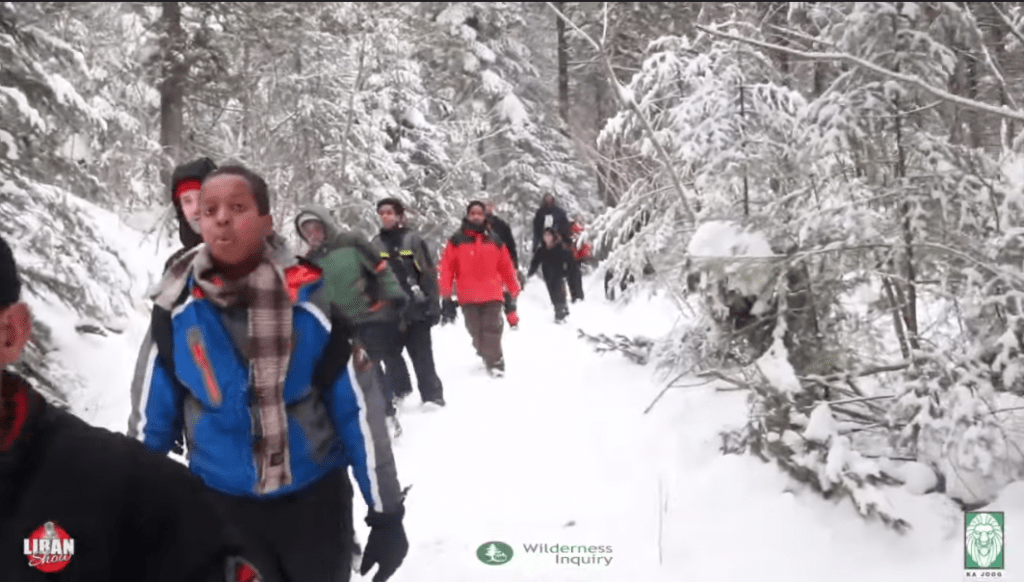
When we think of taking kids into the Boundary Waters, we picture canoes, long portages, learning to make fires in the rain, but what about winter? And what if you’re a kid whose family are refugees from Somalia? Winter is daunting, but might have more to teach about survival, appropriate clothing, finding inner strength, and about wilderness values. A collaboration between Wilderness Inquiry and youth advocacy group Ka Joog takes kids into the BWCAW to share in new experiences and foster their understanding of themselves, and the outdoors.
Last January, a group of kids from ages 7-14 converged on Bearskin Lake on the way to YMCA Camp Menogyn – many had never been away from their families, never mind camping outdoors in frigid winter temperatures. In a few days, they experienced dog-sledding, skiing, sledding, an ice plunge and sauna, snowball fights and windstorms.
What many long-time Minnesotans take for granted–camping, going to a cabin for a weekend, sledding, ice-fishing–is new, exciting and sometimes scary for these kids. “There’s a guy in my class who’s always talking about his cabin and going to his cabin,” one of the campers tells Alex Baumhardt from Minnesota Monthly. “This is my first time at a camp. In the winter, I don’t really go outside much.”
Connecting to the outdoors
Wilderness Inquiry has a forty-year history of helping people get outdoors and overcoming obstacles. Wilderness Inquiry founder Greg Lais adds: “For all kids, no matter where they come from, if they’re experiencing our public lands and seeing the richness and the beauty of those lands—especially if they can stop and think and can get the concept that they actually own those lands, as part of the public—I think that’s a huge connector, a big thing that helps them put in roots and think of themselves as a Minnesotan and as part of the fabric of this country.”
Building connections/community
Ka Joog, which in Somali means “stop” or “stay away,” aims to get Somali-Minnesotan youth outdoors, outside of their comfort zones, and sharing their experiences. Their shared adversity, growth and cooperation fosters community, helps them to feel less alienated from their non-Somali peers, and gives kids a greater sense of belonging. Ka Joog’s executive director Mohamed Farah told Minnesota Monthly: “If we don’t get involved, some of these young people will alienate themselves…They might get involved in gangs, recruitment, drugs, negative influences. They’re in the middle of an identity crisis, trying to be part of the American fabric, but also identifying as Somali and dealing with the pressure of being Muslim-American. We’re trying to help them be part of that American fabric without rejecting the identity they carry with them, which is rich.”
Check out their video:

READ MORE:
Wilderness Inquiry and Ka Joog Partnership



